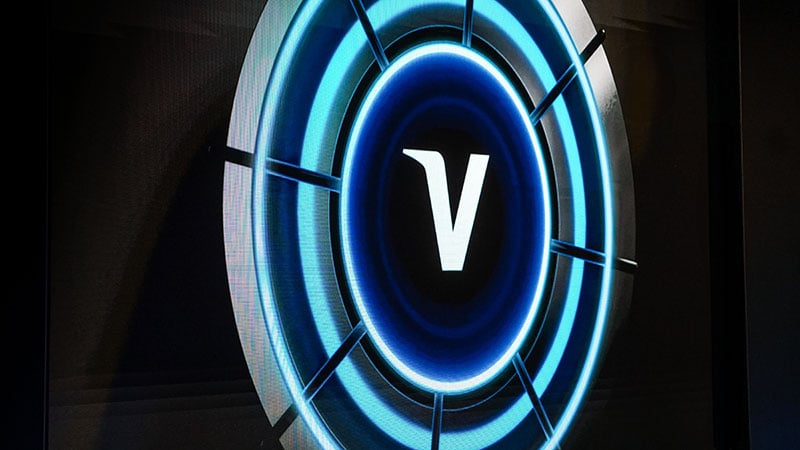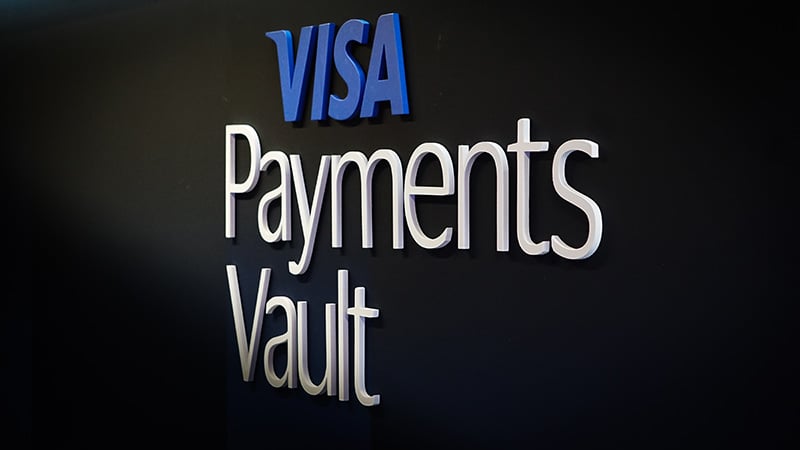Axios Publisher Nicholas Johnston and Visa's Michael Jabbara talk on stage at the Visa Payments Vault, D.C.
At the Visa Payments Vault in Washington D.C., Axios Publisher Nicholas Johnston sat down with Michael Jabbara, SVP of payment ecosystem risk and control at Visa, to tackle a rising concern that should have everyone’s attention: the growing threat of AI-powered fraud.
With cybercrime costs expected to hit a staggering $10.5 trillion this year, Jabbara pulled back the curtain on what’s keeping him up at night, and how businesses and consumers alike can fight back. Here are seven key takeaways from their eye-opening chat:
1. AI is fueling a fraud explosion
The cost of fraud and cybercrime has grown over 30 percent year-over-year for the past six years, ballooning into what Jabbara calls a global “tax” we’re all unknowingly paying — roughly 10 percent of our economic activity. That money? It’s not funding schools or parks, but instead it’s funding trafficking and other criminal networks.
2. Fraudsters are early AI adopters
Before most of us even heard of ChatGPT, bad actors were already using AI to generate deepfakes and scale up phishing schemes. Now, they're creating malware with AI-assisted coding and crafting eerily effective marketing emails.
3. What every business should do to fight AI-powered fraud
According to Jabbara, this can’t just be a risk team problem. It’s also a CEO-level issue. Here’s how to approach it:
- Invest in AI to fight AI: Over the past five years, Visa has invested $12 billion into fraud prevention, including building AI-powered platforms designed to stop bad actors in their tracks. The result? $14 billion in presumed fraud prevented in the U.S. alone just last year.
- Strengthen public-private partnerships: Collaborate with government agencies to share intelligence and disrupt fraud networks at the root.
- Educate your customers: Consumers are often the weakest link. Give them tools and awareness to make smarter, safer choices.

4. Consumers can watch out for these red flags
Jabbara’s golden rule: If someone is asking you to act quickly while you're either really excited or really scared, pause. That urgency is a telltale sign of a scam. The best defense? Take a beat, breathe and verify before acting.
5. Pro tips to safeguard your data
- Don’t use static or easy-to-guess passwords.
- Enable transaction alerts on your accounts.
- Avoid sharing data with people or platforms you don’t fully trust.

6. What’s next for AI: A smarter fight against smarter threats
- Criminals will push harder into the agentic AI trend, aiming to manipulate autonomous agents into making fraudulent transactions.
- Visa and other defenders are building fraud-detection AI tools that are adaptive vs. reactive, and can outsmart these tactics through automation and scalability.

7. Prevention is performance
Unlike marketing, which often delivers a clear ROI, cybersecurity can be a tougher sell — because success usually means nothing visible happens. But that’s exactly the point, says Jabbara: “If I’m in risk and ask my CEO for $1 million, my promise is that nothing happens. That’s a harder sell, but I think we need to change our perspective on the need to invest.” The solution? Shift the narrative: Show that prevention is performance.